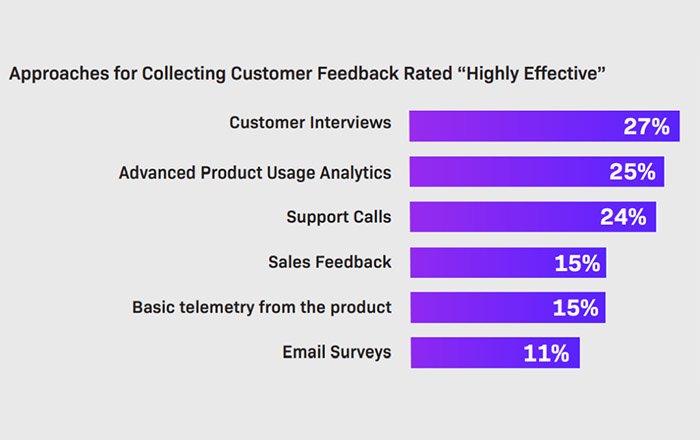Leveraging Product Usage Data for Enhanced Engagement and Retention
Product success rides on strong engagement and retention from users. To understand user behavior in detail, product usage data can provide key insights and enable us to cater an experience completely tailored to their needs.
It helps us take proactive measures that also assist in improving the end user’s journey with our products. Knowing what is important for user loyalty empowers organizations to stay ahead of customer trends rather than just responding to them after they are visible.
Useful cases let us demonstrate promising results driven by product usage data that will result in enhanced engagement and excellent client experiences leading eventually towards sustained growth.
Gathering Product Usage Data

Implementing analytics tools and tracking mechanisms
Implementing analytics tools and tracking mechanisms is essential to gathering product usage data. Analytics tools offer powerful insights into usage behavior by collecting key data points such as clicks, user interactions, feature invocations, etc.
The implementation of tracking elements allows detailed information such as user sessions or page views to be captured through various channels. Care must be taken when handling private consumer personal information so companies need to ensure their tools are cryptographically secure and compliant with relevant privacy regulations.
Collecting relevant data points: user interactions, feature usage, etc.
Collecting relevant data points can be essential to understanding user behavior. Product usage data can provide key insights into user interactions, feature usage, time spent on the platform, and other activities.
To collect such data points, analytics tools as well as specific tracking mechanisms should be implemented which allow for regular collection of accurate and reliable information. Additionally, a company should always ensure compliancy with market laws related to customer privacy protection so as not to make use of unethical or illegal methods.
Ensuring data privacy and compliance
When gathering product usage data, it is important to ensure that user privacy and compliance are kept in mind. This includes implementing systems of secure storage and transmission for tracking user interactions as well as operational guidelines designed to comply with applicable laws and standards.
Additionally, data point collection should only focus on insights making use of anonymous information, in order to protect the interests and security of individual users. Companies should build trust by meaningfully communicating the value exchange as well as explaining how personal information will be used openly and honestly.
Analyzing Product Usage Data

Identifying key metrics for engagement and retention
Analyzing product usage data allows for further understanding of user behavior. An important step in this process is to identify key metrics that shed light on engagement and retention.
To do this, various methods such as cohort analysis can be used to segment users based on similarities or behaviors, and relevant elements from the usage data like user interactions, feature usage, time spent etc. can be tracked versus average values to assess where individual users differ compared the overall trend.
Conducting cohort analysis to segment users
Cohort analysis is a powerful tool for segmenting users based on their usage data. This involves grouping users into cohorts based on similar characteristics, behaviors, and patterns. By evaluating user actions within various pools or time frames, dynamics can be more clearly perceived to build detailed customer profiles.
Such insights enable effective product team decisions around user journeys and feature investments so that engagement strategies are optimized in the right direction. Additionally, cohort analysis also helps understand how specific types of users interact with products in different ways fostering increased loyalty and retention over time.
Utilizing data visualization techniques for better insights
Utilizing data visualization techniques is a great way to better interpret at-a-glance insights from multiple user segments.
Effective visualizations convey complex information quickly, help identify potential opportunities or course corrections, eliminate unnecessary details, showcase correlations between variables, and empower informed decision-making.
Data visualization drives improved product understanding that can elevate any multi-faceted strategy to the next level of success.
Understanding User Behavior

Analyzing user journeys and touchpoints
Analyzing user journeys and touchpoints requires a deeper understanding of how users behave when interacting with the product. Product usage data around user interactions allow businesses to track every click and uncover the characteristics and behavior of individual users.
Through an analysis of each experience, from discovery to engagement, businesses gain invaluable insights that can inform improvements towards better experiences for next time a task is presented.
Key performance indicators like drop-off points may be monitored along user journeys enabling proactive management and improvement for customers onboarding or when transitioning within any activity.
Identifying patterns and trends in usage data
Patterns and trends in usage data can provide important insights into user behaviors. By examining typical sequences of activities or analyzing the time between activity interactions, product teams can identify which elements encourage engagement.
Identifying behavioral patterns can also alert product development when unexpected interactions occur; uncovering new relationship styles that weren’t considered. Analyzing metrics such as visit frequency or dwell time help measure the effectiveness of specific features too, indicating areas for improvement or abandonment.
Conducting user surveys or interviews for qualitative insights
Conducting user surveys or interviews can provide further valuable information into user behavior and objectives which product usage data alone cannot quantify. Surveys offer opportunities to ask open-ended questions that explore users’ feelings, attitudes, preferences, and experiences.
Through qualitative insight derived from engaged conversations, organizations may better gain an understanding of why certain behaviors take place and inform targeted areas to improve engagement or retention projects.
Iterative Approach and Continuous Improvement
A/B testing to evaluate the impact of changes
continuous improvement with A/B testing is essential if achieving ongoing success for a product. It allows businesses to experiment with different versions or features to determine the most effective result, producing data-backed insights that can guide how the user engagement and experience should evolve over time.
A/B testing will provide alternate versions of pages or features to be split-tested among users, making it possible to make informed decisions about what works best based on observed interactions rather than guessing from existing assumptions. Test results can further be used as metrics against which KPIs (key performance indicators) are monitored over iterative cycles so any business strategy can take into account change in user behaviors along with nuances in new feature rollouts.
Monitoring and tracking key performance indicators
KPIs should be tailored to the individual business objectives and measure the success of certain user behaviors, interactions, feature usage, and more. Capturing extensive data points such as session counts and time spent in an app enables brands to quantify progress more effectively towards goal attainment.
By assessing relevant metrics over various time periods, businesses have visibility into areas needing adjustments or improvement so they can continually inform their decision-making with an iterative approach that aligns with aggressive goals in user engagement and retention.
Iterating and refining strategies based on data-driven insights
Iterating and refining strategies based on data-driven insights is an integral part of any product development team’s continuous improvement efforts.
Product teams should use iterative approaches such as A/B testing to understand the impact of changes they make to the product and leverage analysis from their usage data (e.g customer touchpoints, user interactions) to continuously refine engagement and retention efforts over time.
This helps better define user cohorts according to behaviors that will lead to positive outcomes, enhance user experiences with targeted notifications & recommendations, improve retention initiatives like intuitive onboarding sequences and personalized loyalty programs or offers.
Conclusion
Product usage data is a powerful tool that can help businesses increase both engagement and retention of their products.
By collecting data points that give insight into user behavior, proactive strategies for engagement personalization, notifications, onboarding optimization, incentive, and loyalty programs can be implemented to maximize customer satisfaction.
Through continuous improvement using A/B testing and iterative feedback loops the product growth process is optimized with resources nailed only on successful actions informed by data-driven insights. Take action today to ensure success tomorrow!
- Creating a Knowledge Base: A Simple Guide to Building one - September 12, 2023
- Enhancing Engagement Rates and Achieving Greater User Retention - August 29, 2023
- 5 Strategies for Enhancing Customer Experience and Driving PLG - August 15, 2023

